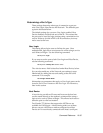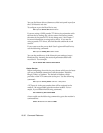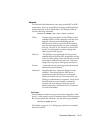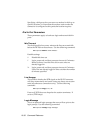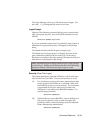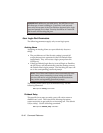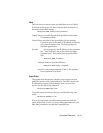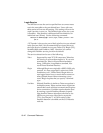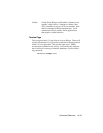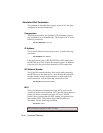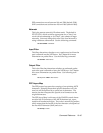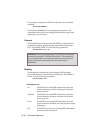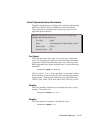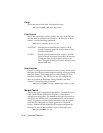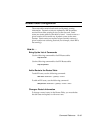10-42 Command Reference
Login Service
The NETServer uses the service specified here to connect users
not in the user table to the port default host. Users with user
table entries will not use this setting. This setting will never be
used if security is set to on. The Default login service for a port
is PortMux. Note that this is different from the default for an
individual user (Telnet). Use the following command:
set s<port #> service_login <
telnet
|
rlogin
|
netdata
|
portmux
> <TCP
port #>
<TCP port#> is the service port of the Login Service you selected
in the previous field. We recommend that you leave this set to
the Login Service’s default service port: Telnet (23), Rlogin (513),
Netdata (6000), and PortMux (1642). Note that you cannot
change the PortMux service port from its default.
The service selected can be one of the following:
Telnet Supported by most TCP/IP computers, Telnet lets
the user log in to hosts that support it. If you set a
terminal type, Telnet will pass that information
along. Otherwise, it negotiates a standard, Net-
work Virtual Terminal interface.
Rlogin Although Rlogin was originally a (BSD) UNIX only
protocol, it is now supported by some non-UNIX
machines as well. Unlike Telnet, Rlogin allows a
user logged into a host, to access their accounts on
other (trusted) hosts without reentering a pass-
word. Rlogin requires that you specify a terminal
type.
PortMux (Default) PortMux is similar to Telnet except that it
multiplexes many Telnet sessions into a single data
stream that’s more efficient to transmit and requires
fewer connections. PortMux requires that the host
be running a special PortMux daemon (in.pmd).
Note that this daemon also allows the host to use
NETServer ports set to Host Device as pseudo
TTYs (See Chapter 7). A UNIX version of the
PortMux daemon is available on the U.S. Robotics
web site.




